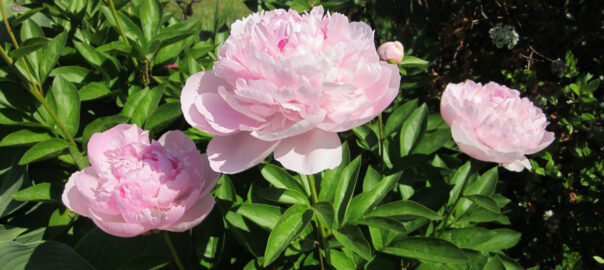
Peonies are known for their large, fragrant blooms and have a rich history. They have been cultivated for more than 1,000 years.
They come in various colors except blue, and with proper care plants can live for more than 100 years. There are thousands of different peony varieties, with some boasting blooms up to 10 inches wide.
Peonies produce nectar (a sugary liquid) on the outside of their buds, attracting ants, which will help the buds open. While the plants can live for a long time, their bloom season is short.
There are two main kinds of peonies:
Tree peonies (Paeonia suffruticosa) are really shrubs bearing large flowers. They’re long-lived but benefit from having some of their oldest woody stems pruned out every year.
Herbaceous peonies (Paeonia lactiflora), the most common found in the Boston area, die back below the ground every winter. But their vibrant crimson shoots will emerge anew each spring.
Disbudding involves removing side buds, directing the plant’s energy towards the main blooms. Be sure to remove faded flowers.
Many double-flowered peony varieties produce large, heavy blooms that can cause the stems to flop over, especially after a rainfall.
So providing support with peony rings or stakes before the plants get too tall is highly recommended.
After peonies are done blooming, continue watering the plants allowing the attractive foliage to remain in the garden until the first frost kills the leaves.
After the foliage has died, the plant should be cut back to the ground level.
During the winter, our peony photos can bring back some wonderful memories!

